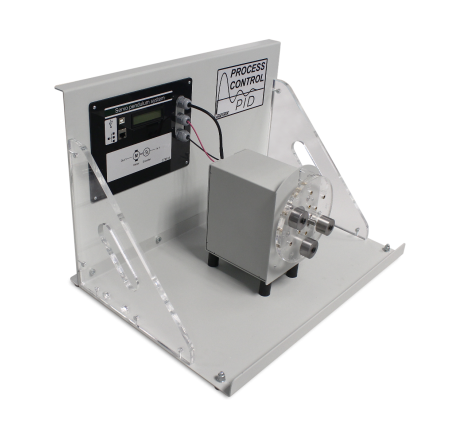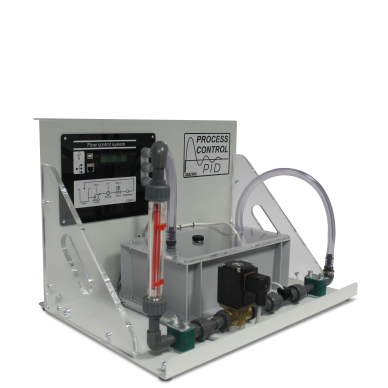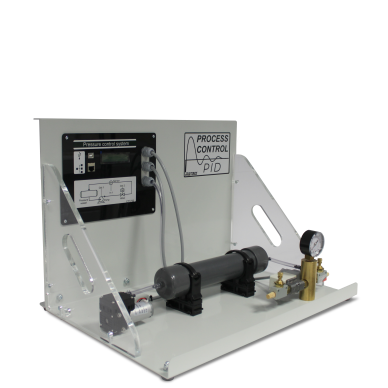Description
This unique system allows students to understand the control of motors in two respects: to control the speed of a motor – a servo control system – and to control the position of a motor’s rotor – an inverting pendulum. One piece of equipment covers both problems.
The system consists of a powerful DC motor mounted on a rugged frame. A disc with captive nuts is attached to the DC motor and students are able to screw in 100-gram weights to different parts of the disc to alter the characteristics of the system. A single weight at 0 degrees forms an inverting pendulum.
The system includes full control and datalogging hardware, which is USB, Bluetooth, LAN/Wi fi compatible. Three software applications allow students to understand Manual control, On/Off control and PID control. The applications allow all parameters to be set, show a graphical representation of the performance of the system and allow data to be logged to a file for further analysis.
The system is shipped with a full API making it compatible with MATLAB or LabVIEW.
A full suite of worksheets, teacher’s notes and reference documentation is supplied.
Learning objectives
- Servo control systems
- Inverting pendulums
- Drive systems and their scaling factors
- Sensor characteristics, scaling factors, calibration
- On/off control systems, oscillation, hysteresis
- System time constants
- P control systems and offset error
- PI control systems
- PID control systems
- Control functions and block diagrams
- Pseudocode implementations of P, PI and PID systems
- Recognition of problems in PID systems
- Integral wind up issues and overcoming them
- Derivative filtering
- Ziegler Nichols algorithm
- Manual tuning of PID systems




